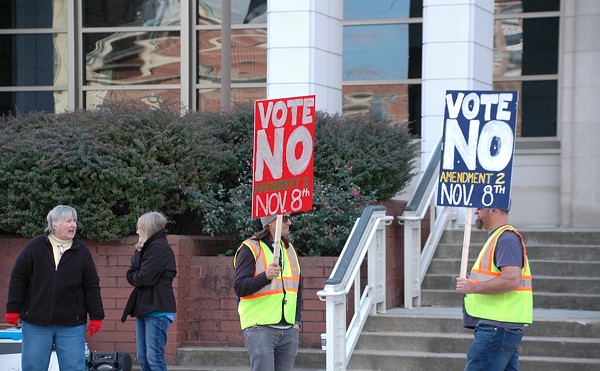City Manager Milton Dohoney Jr. gave a presentation to City Council today that explained how Cincinnati could work to reduce its structural budget deficits. The presentation was presumably in response to Councilwoman Laure Quinlivan, who said Monday that she wanted to see a long-term deficit reduction plan before she could approve the city manager’s proposal to lease parking assets to the Port of Greater Cincinnati Development Authority.
Even with the parking plan’s one-time infusion of money (
“Parking Stimulus,”
issue of Feb. 27), Cincinnati will need to make further changes to balance budgets for the next three fiscal years. To help tame these deficits, Dohoney says the city could reduce or eliminate lower-ranked programs in the city’s Priority-Driven Budgeting Process, reduce subsidies to health clinics that are getting more money from Obamacare, semi-automate solid waste collection or introduce new or increased fees for certain programs, among other changes.But some council members said they were more concerned about how the city will manage once it loses the parking plan’s one-time injection of funding after the 2016 fiscal year.
“I think this is a bit muddled,” Quinlivan said. “It doesn’t get to the systemic problem we have.”
Quinlivan, who has long argued for “rightsizing” police and fire departments, says the city should draw down its public safety spending to “sustainable” levels, but she says she would prefer attritioning public safety forces over abrupt, short-term cuts. Dohoney acknowledges attrition would help balance budgets, but he cautions that even attrition “would have to be married” with a plan that reduces the public’s expectations for public safety services — particularly if the city decides to not answer every 911 call by dispatching officers, which is currently required.
Dohoney says City Council needs to be clearer with its long-term budget policy. “If we’re going to make adjustments, I need clear policy direction, and I do not feel that I have it,” he says. “Give me a clear direction on where you want the police department to be, and I can get it there.”
The city manager says the city will have to approve a tax hike or cuts to government spending, which poses the possibility of layoffs, if it’s serious about eliminating structural deficit problems.
For every 1,000 residents, Cincinnati has less cops than only two comparable cities: Cleveland and St. Louis. The fire department has higher numbers, with Cincinnati equal to Pittsburgh and above other comparable cities. The high levels of cops and firefighters per capita comes despite downsizing in the police and fire departments in the past five years.
Vice Mayor Roxanne Qualls says the city may have drawn down its police force between 2000 and 2012, but the local police department has also been reorganized in a way that actually puts more cops out on patrol. Lea Eriksen, the city’s budget director, says street strength has moved from 832 police officers out of 1,034 officers available in 2002 to 864 out of 981 in 2012.
Between 2000 and 2012, the fire department was the only city agency to see an increase in employment, while the city had slight employment reductions overall. In the same time span, the General Fund increased by more than $30 million, and Cincinnati’s population fell by about 10 percent.





